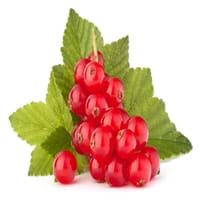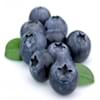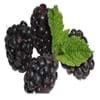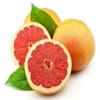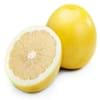Health Benefits
Cancer prevention, Gout treatment, Heart care, Regulation of heart rate, Treatment of rheumatism
Cancer prevention, Cures gastro-intestinal troubles, Reduces nervous tension, Ulcer prevention
General Benefits
Anti oxidant properties, Controls blood pressure, Cures fever, Digestive aid, Healing of wounds, Helps in weight loss, Strengthens bones
Anti oxidant properties, Anti-inflammatory properties, Boosts immune system, Controls blood pressure, Digestive aid, Eye care, Helps in weight loss, Improves blood circulation, Maintains healthy cholesterol level
Skin Benefits
Brightens and lightens complexion, Reduces wrinkles, Treatment of acne
Anti-aging benefits, Reduces wrinkles
Hair Benefits
Protects hair
Regulates hair growth
Allergy Symptoms
Abnormally rapid heart rate, Anaphylaxis, Breathing difficulty, Hives, Itching, Swallowing difficulties
NA
Side Effects
Possibly unsafe during pregnancy
Allergic reaction
Best Time to Eat
Best if taken as a breakfast (or empty stomach), As a snack in the late afternoon, Don't eat after meal, Morning time (before lunch)
As a snack in the late afternoon, Don't consume at night and before bed, Eat the fresh ones, avoid mixing with any other foods, don't eat after meal., Morning time (before lunch)
Vitamin B5 (Pantothenic Acid)
Vitamin C (Ascorbic Acid)
Vitamin E (Tocopherole)
Not Available
Vitamin K (Phyllochinone)
Not Available
Lutein+Zeaxanthin
Not Available
Calories in Fresh Fruit with Peel
Calories in Fresh Fruit without Peel
Not Available
Not Available
Calories in Frozen Form
Not Available
Not Available
Calories in Canned Form
Not Available
Not Available
Varieties
Rovada, Stanza, Red Lake, Junifer and Jonkheer van Tets
Meech’s Prolific, Lusitanica, Champion and Vranja AGM
Origin
Europe
Iran, South-West Asia, Turkey
Soil Type
Moist, Well-drained
Loam, Well-drained
Climatic Conditions
Cold
Warm
Facts about
- The albino version of red currants known as white currants, are often sold as different fruit.
- Red currant tea is healthy substitute for coffee.
- There are more than 150 varieties of red currants.
- Due to its strong & fruity aroma, brides consumed quince to ensure "perfumed lips".
- It is also called as ‘Pear of Cydonia’, being native to Caucasus and Iran.
- They call it as the ‘golden apple’ of Greek Mythology.
Top Producer
Russia
Turkey
Other Countries
Belgium, France, Germany, Ireland, Italy, Netherlands, Poland, Portugal, Scotland, Spain, Sweden, United Kingdom
Algeria, Argentina, Azerbaijan, China, Iran, Morocco, Serbia, Spain, Uzbekistan
Top Importer
Germany
United States of America
Top Exporter
Russia
Argentina
Botanical Name
Ribes rubrum
Cydonia oblonga
Synonym
Not Available
C. vulgaris
Subkingdom
Tracheobionta
Tracheobionta
Division
Magnoliophyta
Magnoliophyta
Class
Magnoliopsida
Magnoliopsida
Order
Saxifragales
Rosales
Family
Grossulariaceae
Rosaceae
Species
R. rubrum
C. oblonga
Generic Group
Saxifrage
Rose
Difference Between Red Currant and Quince
We might think that Red Currant and Quince are similar with respect to nutritional value and health benefits. But the nutrient content of both fruits is different. Red Currant and Quince Facts such as their taste, shape, color, and size are also distinct. The difference between Red Currant and Quince is explained here.
The amount of calories in 100 gm of fresh Red Currant and Quince with peel is 56.00 kcal and 57.00 kcal and the amount of calories without peel is Not Available and Not Available respectively. Thus, Red Currant and Quince belong to Low Calorie Fruits and Low Calorie Fruits category.These fruits might or might not differ with respect to their scientific classification. The order of Red Currant and Quince is Saxifragales and Rosales respectively. Red Currant belongs to Grossulariaceae family and Quince belongs to Rosaceae family. Red Currant belongs to Ribes genus of R. rubrum species and Quince belongs to Cydonia genus of C. oblonga species. Beings plants, both fruits belong to Plantae Kingdom.
